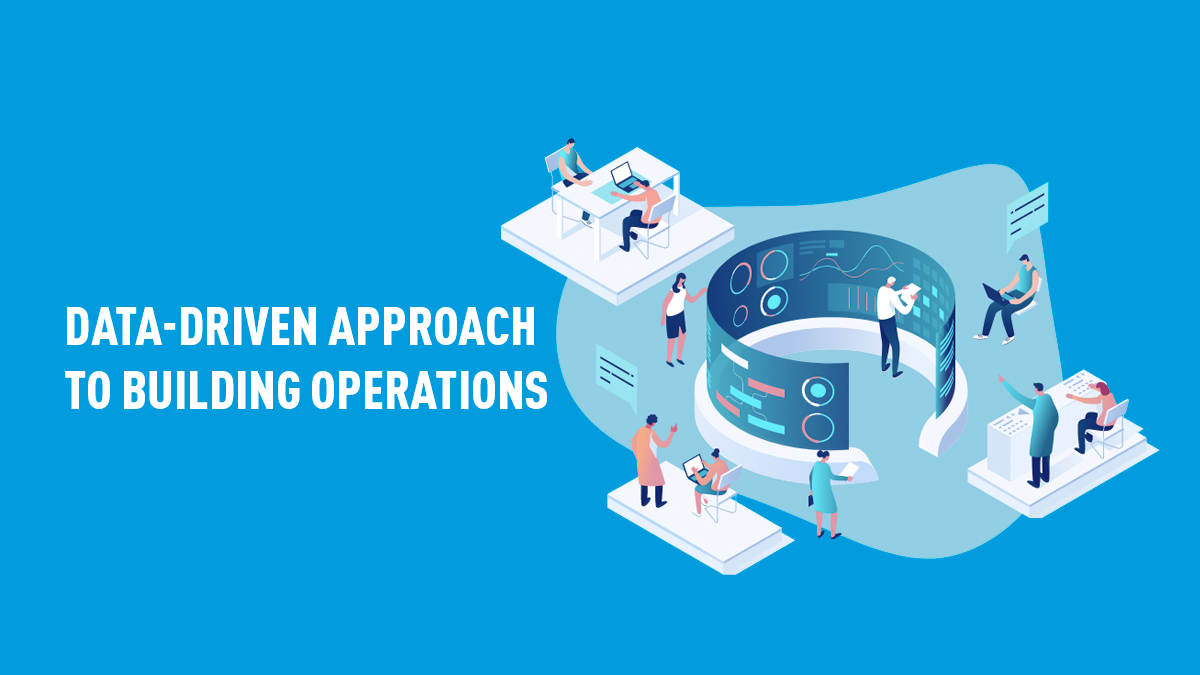
Data-driven Approach to Building Operations
The data-driven strategy for an organization can be focused on data analysis and interpretation to take strategic decisions. A data-driven approach helps organizations to analyze and organize their data for improved customer service. By using data to guide its operations, a company may contextualize and/or personalize its message for a customer-centric approach to its prospects and consumers. In order to ensure better productivity and capital optimisation through corporate decision-making, the next level of operating efficiency must integrate a profound view of related data in organizations. Automated action on these processing decisions would allow businesses to achieve their desired efficiencies in a scalable way. However, it's tough to get there. In this paper , we address why many in the industry embark on this more advanced approach to operational efficiency and describe three main strategies to ensure performance.
A recent increase in energy use in buildings has created huge quantities of energy data to improve data-driven algorithms for wide use in the entire construction industry. The results of many analysis shows that the approaches guided by data have well addressed many applications relating to building energy, including demand forecasts and forecasting, energy trend profiling, mapping of regional energy use, building inventory benchmarking, global revision strategies, and guidance etc.
In recent years , data have been central to all new organizational concepts. Sadly, while they all pledge new cost savings standards, none have been introduced. This is because financial institutions are still struggling to recognize and incorporate some of the essential structure necessary for the useful and successful data-driven Strategy. Over the last decade, regulatory enforcement has been the focus of activities, but the focus now is on collateral, investment, financing and trade. Companies question how they can better incorporate flexible and functional systems and switch from business to business. This involves reviewing regulatory measures to promote and productivity in global reporting, link internal and external data, generate unique data views and aggregate global algorithm optimisation inventories.
What exactly a Data-driven building Management software can contribute to a building ?
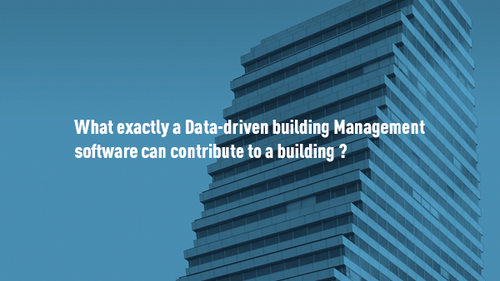
A normal building automation program can only focus on monitoring and flogging if there is anything going wrong. If there is a central analytic platform enabled by technologies like IoT and AT etc. it can analyze the real time building data from various building systems and provide the insight of building performance. Those software gather data from various sources and serve a single data platform for smart building. By analysing the historical data with ML, it helps to predict the building performance with optimized data. Based on these predictions, the building management system can adjust automatically to achieve better energy saving and building performance.
With the implementation of these softwares, the energy can be saved upto 30-40 % for typical existing commercial buildings . These systems are simple and fully flexible digital visualization tools for energy monitoring and optimization. The real time performance data can be accessed anywhere within the building. Such BIM model integrated systems can be taken further to a facility management for better building operation and maintenance.
What greater efficiency is achieved?
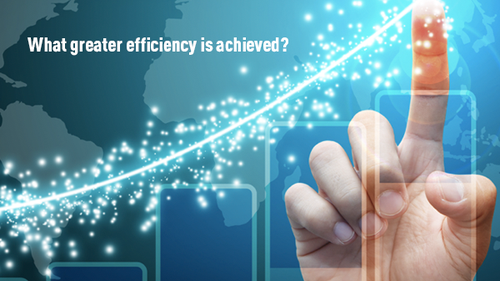
Operating efficiency-driven data saves real money and decisions on collateral, increases liquidity and leads to the restructuring of collateral transactions. There is tangible cause for improving operating efficiency, including improving collateral optimisation, migrating liquidity management off table lines and improving transfers' prices. All these objectives are related, but can be difficult to accomplish at the same time, given the various topics of data management across the business.
A Smart building’s ‘digital brain’
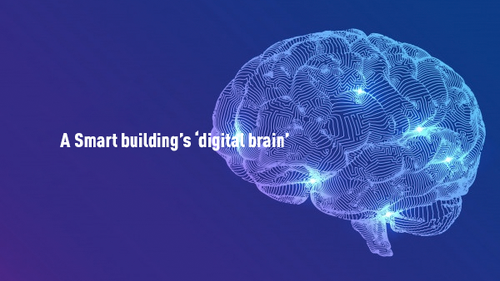
Another building is like a human body – the MEP system that reflects the breathing and circulatory systems is rich in data, whereas the bones and skins are the architectural and structural outputs. Our brains are used to organize our processes and respond to external changes and abnormal internal results. In buildings the key emphasis is the control and warning capabilities, while building automation and energy management systems have been around for some time. In a 'digital brain,' a key computational platform offers further insights into the combined knowledge, thanks to the growing convergence of structural systems.
Three strategies for next level operational excellence
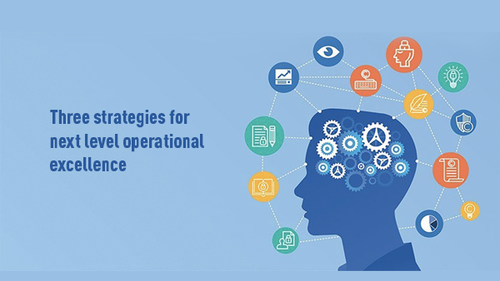
Implementing optimised decisions requires a framework to standardise frequently competing business costs. We identify real-time transparency, analysis , and optimization as essential for operational excellence, and automate action.
- Real-time visibility: The ability to achieve transparency in real-time is built on sound fundamentals. Real-time visibility on inventory, obligations, constraints and agreements, and the normalization of cost elements across the firm are needed for accurate decision-making. While some of these may appear to be common sense, they are also among the harder tasks to accomplish. Each requires a robust view of data across the organization that may or may not be readily available. Consolidating inventory management is the most critical step towards efficiency. Also, it is the first thing to pay attention in terms of collateral and liquidity management that is buying and selling companies. It often only receives the right attention when it is too late, unfortunately. The ideal solution is to add all stock pockets into one pool, so that retailers and collateral allocators can share information from one source. In practise, companies still often work on fragmented data pools across various geographies.
- Analytics and optimization platform: Companies should be able to complete a single technology framework with robust collateral analytics and optimization techniques and deliver recommendations across a range of down-stream channels including bilateral transactions, finance, tripartite, CCP and domestic transfer rates. It is also important to know whether the bonds are third-party guarantees, who owns the bonds(s) (company or customer), what their value on the collateral markets is, what the estimated holding time period is, and what covenants or actions may affect the decision to use the inventory.
- Automation: The right platform for maximising securities financing and derivatives generates recommended actions by exchange and collateral allocations. This extends through bilateral, CCP and tripartite partnerships to counterparties and collaterals. In order to achieve the desired efficacy, such recommendations must be automatically booked. Identifying the required activities is an essential step, but automated implementation in an increasingly complex global environment is the most crucial way of achieving organisational ease and scale.
Each organisation would have to decide on the nature of the goods and companies that they want to automate. Some organisations would be able to do all transactions in general collateral, while others will automate a variety of more complex activities with the correct data and organisational structures. The main decisions and supervisory steps will still be human at the end, but the more businesses can automate, the more they will scale up, adapt to demand, minimise errors and eventually increase financial results in the near and long run.
4 Prerequisites for a Data-driven Approach to Building Operations
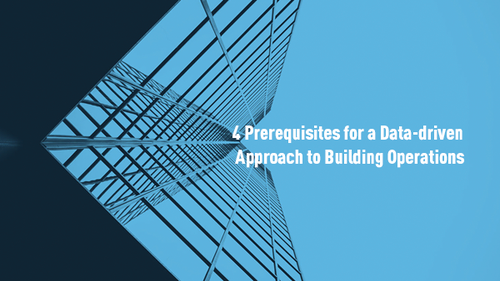
Increasing the value of big data and the internet (ioT) technology is perhaps more critical than any other role than building operations in commercial property (CRE). However, frameworks have been used fragmented to solve particular issues to date. In general, solutions have been implemented as siloed, expertly focused tools which do not have the capacity to communicate or exchange data with other integrated systems. Different groups with non-related accountability must evaluate unique data and have no ability to unify or comply with the siloed CRE data in a point solutions system. Duplication of information and unstandardized data can lead to fragmentation as well. In the end, this interconnectedness deficiency has affected data quality, completeness and usefulness. This condition is not universal, but it is common.
Some immobilising businesses are using the data to make informed decisions on operating and capital expenditure. A number of metres and sensors that produce information every second can be used to drive this data-driven approach to cover any vital equipment, tenant's space and the environment inside. The definition of communication and information embedding in physical assets is not a single system or technology. It can be interpreted as a network overlaying all operating conditions without human interference. Change in metres and sensors able to capture continuous data will be nothing without the Internet infrastructure. These technologies combine physical objects to allow mechanical and electrical systems to be remotely monitored and to create opportunities to improve performance. The first step in introducing an approach to construction activities powered by data is to analyse the current data collection process and requirements. There are also a couple of issues that need to be tackled to fully leverage the IoT technology opportunities.
Granular & Building-level Data Collection

The first hurdle to overcome in implementing a robust system is collecting both granular data of individual pieces of equipment and/or tenant spaces as well as data from the master meter. While it is not very difficult to collect data for an entire building, it is not so simple to do so for individual equipment systems (at an affordable price). From boilers in the basement, to exhaust fans on the roof and lighting on each floor, it is simply not realistic to attach sensors to each of the hundreds, or sometimes thousands, of inaccessible end points in a building.
Cloud Connectivity for Data Streams

Granular information is important, but quality information is only useful if it can be immediately transmitted and continuously evaluated outside the building. The second impediment to the implementation of a stable framework is to ensure secure cloud connectivity. Data can be uploaded to the cloud in real time with many benefits. Firstly, it avoids problems with version controls that arise when individuals make changes to the same data set as often occurs in the interdepartmental hand-off. Second, it becomes available from anywhere in the world, as data is stored in the cloud. Though it sounds simple and insignificant, many CRE processes continue to be done with pen and paper, which makes it possible to physically look at current and historical data to locate them. Finally, the next obstacle – the linking of varying data sources and lay analytical systems to monitor results-requires cloud connectivity.
Connecting Disparate Data Streams

Real-time, cloud-accessible data are a big step forward. But it does not address the issue of data silos. To solve this issue, it is crucial that different systems can “talk” to each other and share data. APIs allow for disparate data streams to pull relevant data and reports together to discover insights that would have previously been impossible. APIs also provide additional inputs, such as weather data, for improved predictive analytics for operations and maintenance. While many vendors continue to sell closed systems that are not able to share information, customers are demanding greater collaboration across vendors, and the market is responding.
Cost Effectiveness & Return on Investment
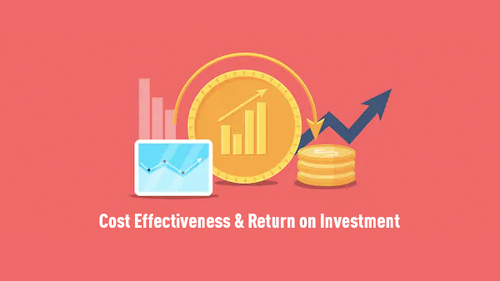
The next query undoubtedly points to the cost of the upgrade and the projected return on the investment with the value of the big data and the IoT seen at a scale. In the building managers community, the majority of building owners and operators know best about complex building management systems (BMSs), which require a considerable cost to just a few engineers. Most IoT solutions, however, are cheaper than initially thought. Indeed, a small fraction of BMS is introduced, while orders of magnitude can still be tracked in greater quantities. Another cost is to interrupt the daily activities during the construction process. In most CRE assets, a full power shutdown or significant modifications to infrastructure are unacceptable.
5 Steps To Building A Data-Driven Culture

One of the problems faced by companies today is that data is siloed in many divisions and limits cross-functional access to data and sources. Worse still, many methods for insight generation aren't intuitive, so research is harder than required. The rise in market rates and the amount of data available also contribute to insight that is too late and reduces its value. Compare this with data-driven companies that face these difficulties and achieve results.
Steps to a data-driven culture
- Data-oriented mindsets and infrastructure support metrics: Companies powered by data identify processes which support key business performance measures, and communicate those metrics to employees. Seventy percent of these organisations, Aberdeen says, have a senior manager who supports analytics. A survey of more than 300 start-ups in IT and other sectors, predominantly in north and west America, by Econsultancy, 'Data Driven Community,' found that more than 70% of the newly acquired start-ups have one or more knowledge and analysis employees.
- Data is centralized and organized: Data-driven cultures collect and organise information from all over the enterprise to ensure the data is fresh and important. Data centralization permits continuous updates, keeping data up-to - date and new across the organisation. Companies should be careful what they collect and what they buy. The abundance of information, according to Econsultancy, is a real threat. To ensure that the right information is monitored, simplification and emphasis are required.
- Policies govern data access: Formal regulations regulate user access to data-driven organisations. They build a traceable custody chain to reduce threats, define access levels and decide how and by whom data can be altered. According to Aberdeen, data-driven companies are 56 per cent more likely than other organisations to have structured data policy.
- Data access is layered: In data-driven organisations, the management of key metrics is complex and complicated, with each metric specifically linked to the organisational purpose and the desired result. These metrics are well defined, clearly communicated and calculated to the workforce.
- Analytics are integrated into tools: In data-driven organisations, analytical tools are also among the most innovative tools available. They are usually often integrated into existing methods and are more natural and accessible. Behind the firewall, the cloud and mobile devices, the technologies are available to help people's working activities.
But it is useless, until data is shared within an organisation. Econsultancy points out that dashboards are the main communication tool for startups of all sizes, accompanied by tablets and reports. Data-driven organisations should use their analytical environments as well as their intuition and expertise to deliver operational knowledge as appropriate.
Data-Driven Construction Management
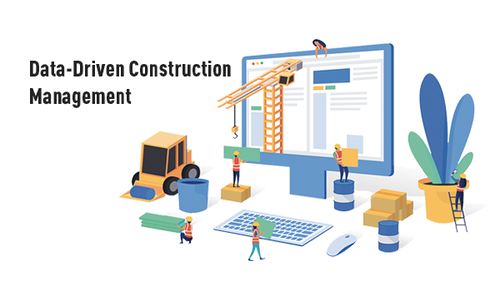
In our business, there is a paradigm shift. Any construction company – whether ready or not – must now also be considered a data company no matter how long it is engaged in construction. We not only install walls, columns, bars, and roofing’s while planning, constructing and running a house, but we also generate mountains of knowledge on the job and in the office. These data are captured in a variety of file formats and diverse workflows and then stored in silos and repositories that are sometimes incompatible. The next limit in construction management is how effectively we use data to help determine and execute projects in a more effective and sustainable way with higher efficiency, lower costs and less risks. This is our biggest obstacle and our best chance. In this context, it is more important than ever to incorporate innovations that change the way in which project knowledge is distributed and consumed.
The manner in which we develop, monitor and exchange data on the workplace and office have fundamentally changed cloud computing and mobile technologies. BDMs have simplified collaboration and transformed ties among architects , engineers , contractors, and owners. Virtual design and construction (VDCs) methods and information modelling building (BImmodels). New technologies are developing for collecting and analysing rich data on diverse workplaces such as unbanned aerial cars (UAVs), the Internet of things ( IoT) and wearables. Mixed reality incorporates actual and virtual worlds in order to create new experiences and visualisations in which real-time representations with physical and digital objects occur – enhancing the use, communication and interaction with data by building professionals. Cloud computing provides all-round, on-demand access to shared tools to rapidly create products and to unparalleled data processing.
This breakthrough, however, has a huge impact. The amount of data that is produced and processed over the life cycle of planning, design and construction projects is unprecedented, which makes it difficult for the stakeholders to identify which efficiently evaluate the information they need, or exchange project data downstream, as innovations develop and become rapidly accessible to the market. Project managers were hit hardest by adding "data sherpa" to the long list of tasks they have already completed.
Construction companies must extract and use easily accessible and space controlled interfaces to make the data available from these silos. Projects that focus on data centralisation and project intelligence should be considered by general contractors looking to restore project management.
Let's start with the simple way to create a website.

Interested in Domitos? Get the Features Guide Today!
Domitos, is world's most sought after facility Management System and we look forward to work with. Digitize your facilities today!